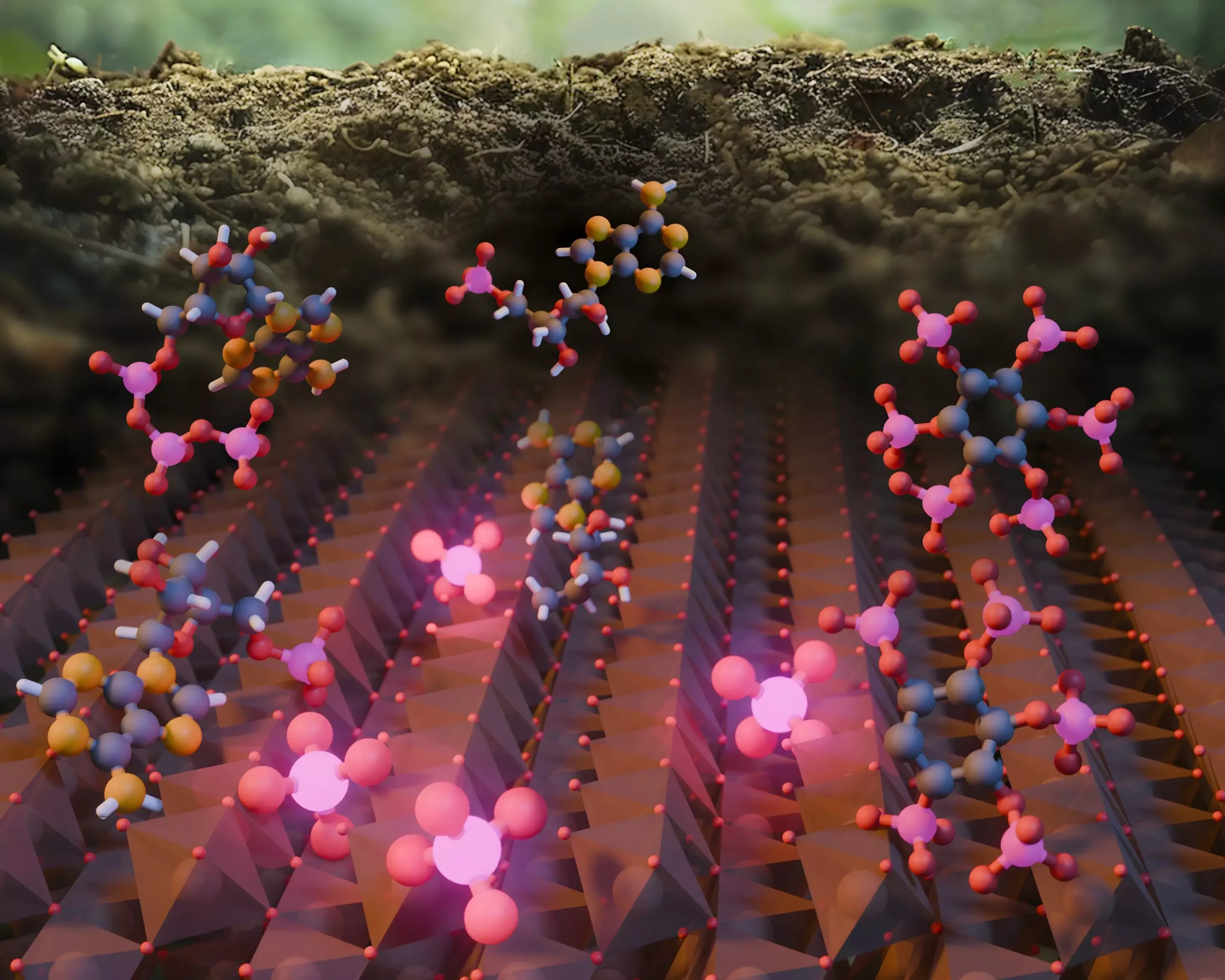Phosphorus stands as one of the essential nutrients for plant growth, acting as a vital building block in fertilizers crucial for boosting agricultural productivity. Without sufficient phosphorus, crops struggle to thrive, leading to reduced yields and food insecurity. Therefore, understanding the phosphorus cycle is paramount, especially in a world where a growing population demands increased agricultural output. A puzzling aspect of this cycle revolves around how organic forms of phosphorus, which are abundant in the soil, can be transformed into bioavailable inorganic phosphorus that plants and microbes can readily utilize.
Traditionally, it was thought that this conversion relied solely on the biochemical activity of plants and microorganisms. The enzymes these organisms secrete were believed to facilitate this transformation, cleaving organic phosphorus compounds and freeing them for use in their metabolic processes. However, recent groundbreaking research from Northwestern University reveals a fundamental shift in this understanding, uncovering a previously unconsidered mechanism—that of iron oxide minerals.
Discovering Nature’s Catalysts
Led by Ludmilla Aristilde, a committed associate professor of environmental engineering, the Northwestern team embarked on an exploratory journey, questioning the prevailing belief in a solely biological phosphorus recycling mechanism. Their research, published in *Nature Communications*, highlights iron oxide as a crucial player in the phosphorus cycling process.
Through meticulous laboratory experiments, the researchers sought to examine the dynamics of phosphorus in environments enriched with iron oxides. Using advanced techniques, including a specialized X-ray analysis at the Stanford Synchrotron Radiation Lightsource, they uncovered that iron oxide minerals not only facilitate the transformation of organic phosphorus but do so at rates comparable to those facilitated by biological enzymes. This revelation not only shifts the paradigm on how we understand phosphorus recycling but also emphasizes the need for a broader lens in environmental studies, one that incorporates both biological and geochemical factors.
Revolutionizing Our Perspective on Nutrient Cycling
The implications of this research are transformative. Aristilde and her team demonstrated that the process of recycling organic phosphorus could no longer be viewed as a purely enzymatic phenomenon. The presence of iron oxides actively participating in this process introduces a significant complexity to the phosphorus cycle, suggesting that minerals play a contrasting role previously overlooked within the environmental sciences.
Iron oxides exhibit catalytic properties that allow them to facilitate reactions involving organic phosphorus compounds derived from decaying biological materials, such as DNA and RNA. This means that whenever organic matter breaks down, iron minerals can step in to recycle phosphorus—connecting the nutrient to the broader ecosystem in ways that challenge existing dogmas. Instead of relying exclusively on soil organisms, we are now aware of a geological component that synergizes with these biological processes.
Addressing Food Security Challenges
With phosphorus mining projected to dwindle in the coming century, understanding alternative mechanisms for phosphorus recycling becomes urgent. The findings from Northwestern’s research provide not only a scientific breakthrough but also a strategic resource for addressing potential food security challenges in the future.
The notion of leveraging natural processes to recycle phosphorus could be the key to sustainable agriculture. As Aristilde points out, manipulating these natural systems is essential for ensuring food security in an era marked by declining mineral reserves. Iron oxide minerals may potentially be harnessed to optimize phosphorus availability in agricultural settings, presenting innovative strategies that could lessen dependence on finite mining activities.
Broader Implications for Planetary Science
The significance of Aristilde’s findings reaches beyond Earth, sparking intrigue in the field of planetary science. The prevalence of iron oxides on the surface of Mars, known for coloring the planet red, echoes the importance of these minerals. This new understanding of phosphorus cycling could provide insight into the potential for life on Mars and the broader nutrient cycles that may exist on other planets.
Should we find that similar processes occur throughout the universe, it could reshape our comprehension of extraterrestrial ecosystems. The ability of minerals to act as catalysts in nutrient cycling might reveal pathways for sustaining life, not only on our own planet but on others as well.
The exploration of iron oxides and their role in phosphorus recycling revolutionizes our understanding of nutrient cycling, challenges existing agricultural practices, and opens new avenues for ecological and extraterrestrial research. This paradigm shift is a compelling reminder of how interconnected our understanding of the world can be and highlights nature’s ingenious methods for sustaining life.

